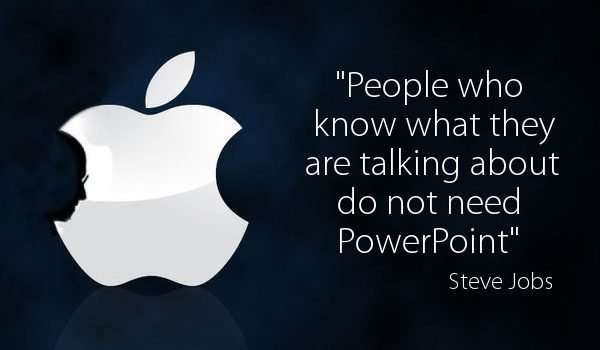Managing your team meetings effectively is possible. During his years as head of the multinational Apple, Steve Jobs attended thousands of team meetings. The famous magnate got the vast majority of these meetings to be productive, unlike many other companies that end up losing millions of dollars a year because of “meeting-itis”. Learning to manage your team meetings as Steve Jobs did is within your reach:
Mass meetings? No, thank you
To Steve Jobs, the core idea of an effective meeting is for it not to be crowded. The Californian magnate only had those people directly involved attend his meetings; the people whose presence was really necessary.
Simplicity has been the driving force behind Apple, and Ken Segall says so in his book “Insanely Simple”, which tells about Job’s devotion for simplicity.
On one occasion, Segall tells how Steve Jobs spotted a person at one of his weekly meetings which was about to begin. He asked her who she was and she replied that she was attending the meeting as part of a related marketing project. Jobs, not giving it a second thought, asked her to leave the meeting. “I do not think we will need you”, he said.
The only crime this person was guilty of, and one which is unforgivable for Jobs, was that she probably had nothing to contribute to the team meeting.
That was not the first time Steve Jobs had applied that philosophy. He also declined an invitation to a “meeting” of technology experts convened by President Barack Obama himself. Jobs did not attend because he considered more people than necessary were going.
Know more: A conversation can be more important than a meeting
One person in charge of each topic
Another concern Steve Jobs had during team meetings was to appoint a person in charge of each issue on the agenda. This is not an aspect that we should easily pass by, when you consider that Apple went on to become one of the most valuable companies in the world.
Internally, those responsible were known as DRI (Directly Responsible Individuals). Anyone attending the meetings and taking a brief look at the agenda could know who the DRI assigned for each topic or subject was, and so coordination among them became a much easier task thanks to this productive practice.
Set a meeting agenda
For a meeting to be really productive for his team, Steve Jobs established a mandatory rule; setting the meeting agenda at the beginning of each meeting.
It may seem just common sense, and yet, many organizations call their members for meetings without prior notification of the issues to be discussed. This ultimately results in an unproductive meeting that has probably lasted longer than necessary and has been more useless than expected.
Encourage the participation of all attendees
If Steve Jobs cared about the fact that only people who had something to contribute attended meetings, the least he asked for was that they really contributed with something. Encouraging the participation of all attendees, for Jobs, guaranteed a productive meeting. The best way of doing that was ensuring communication and debate.
Make sure that the attendees are actually the appropriate ones to contribute with ideas and suggestions to your company.
Finish the meeting defining the steps to be taken next
The leader of the apple company struggled to finish team meetings by defining what the next steps were. A basic issue in any productivity program is to know what to do next, as in a “to-do list”.
Meetings are a fundamental tool for effective team management, so defining the immediate tasks to be implemented is key to any organization.
Know more: “To-day list”: A productive tool
Say goodbye to Power Point presentations
If there was something Steve Jobs hated during meetings it was presentations based on PowerPoint slides. What the Apple CEO demanded were fresh, dynamic meetings where participants took active part and did not hide behind formal and boring presentations.
Throughout the day, Jobs would probably attend quite a few meetings. If he did not want to waste them, these moments should serve to think and debate, and not turn into timewasters. “People who know what they are talking about do not need PowerPoint,” he told his biographer Walter Isaacson.
In short, no one will come and explain us how to manage a team meeting, and we will not see signs on the walls telling us who should or should not attend a meeting either. Finding it out is the true function of the leader, the daily challenge to be faced in their businesses.
If you allow the common sense and simplicity of Steve Jobs to guide your decisions, you will turn your team meetings into a really productive tool. Set a limit to the size of your teams, reduce the duration of your meetings, define the next steps to be taken and you will be able to better react to emergencies or unforeseen events.
It may interest you: Learn to manage a meeting like Marissa Mayer (Yahoo)





